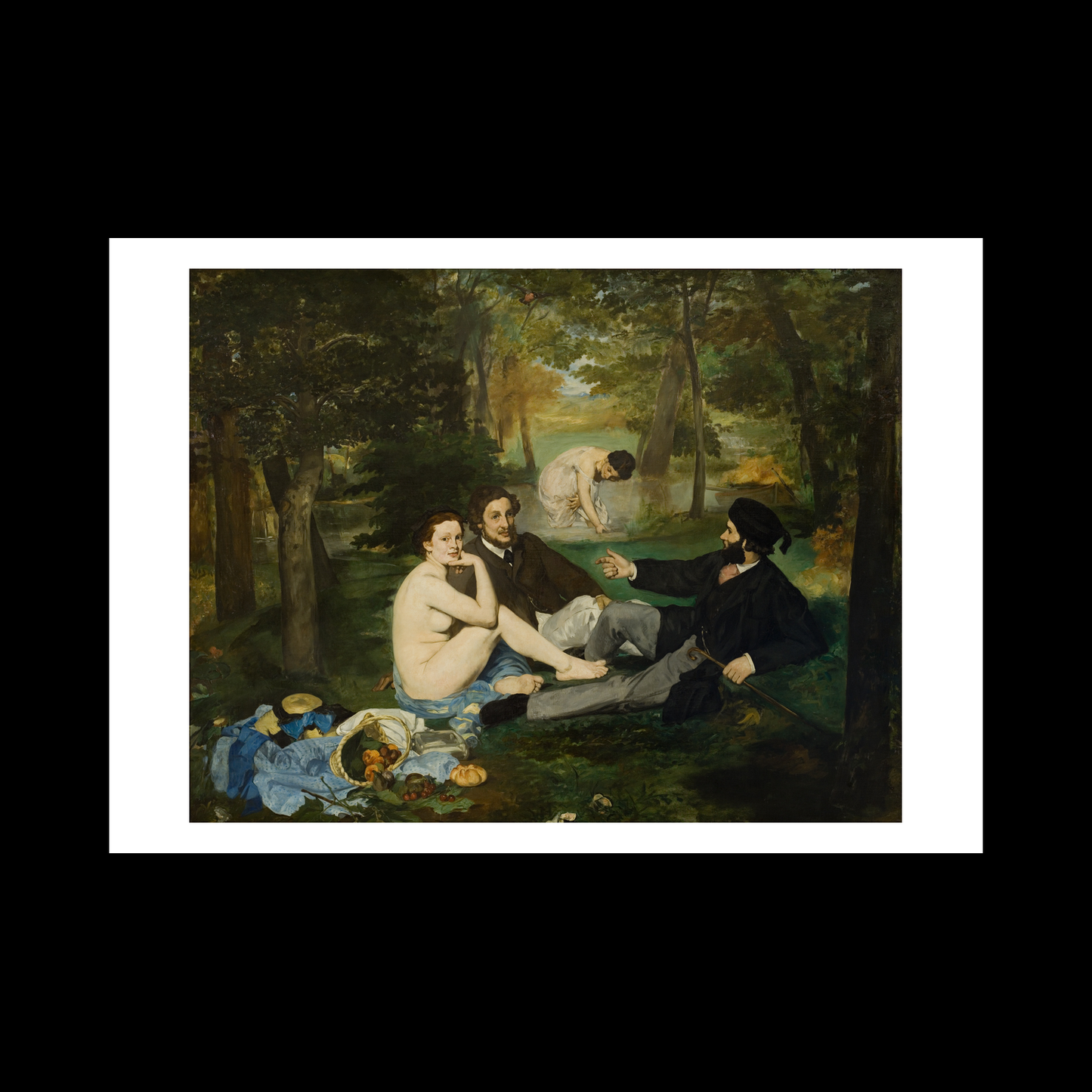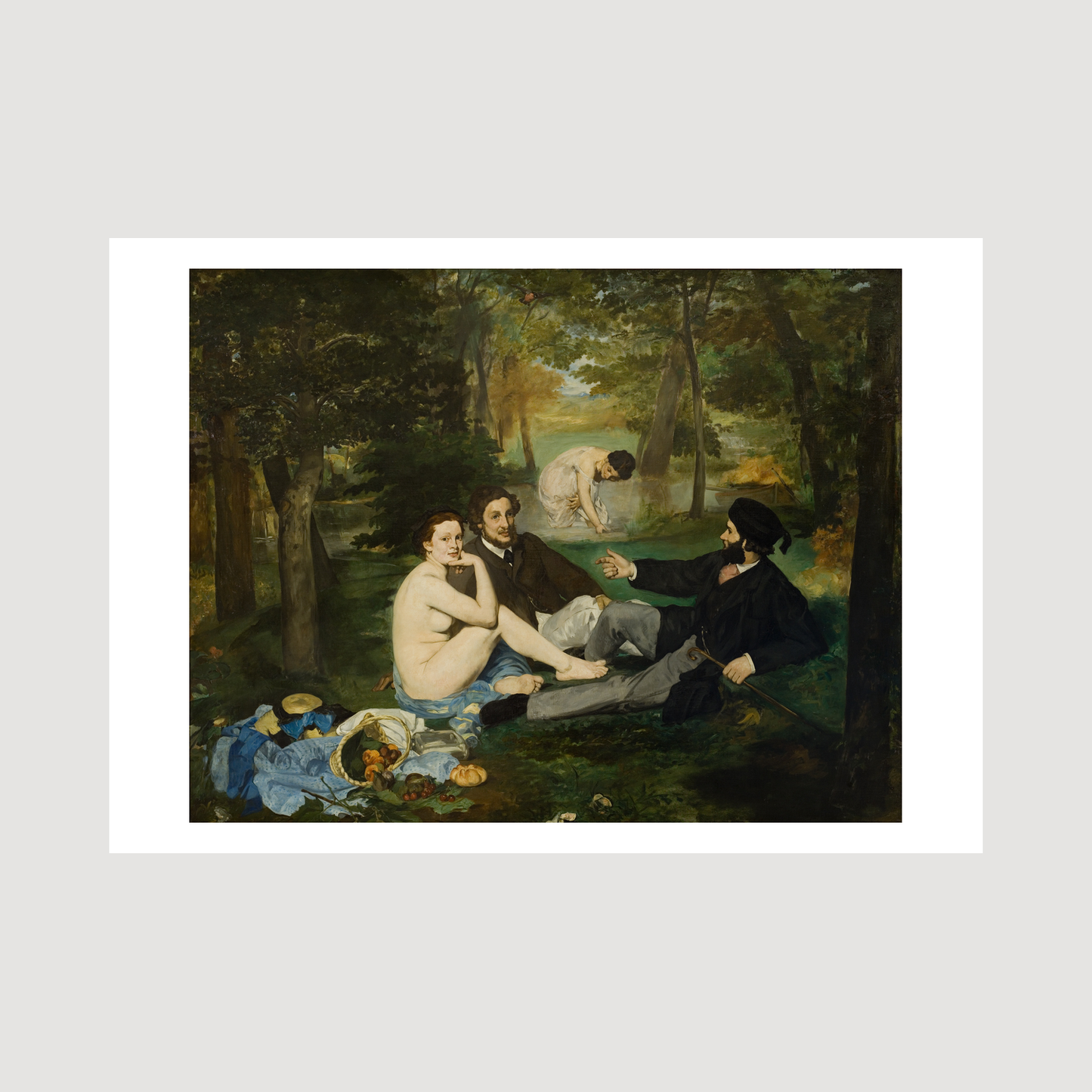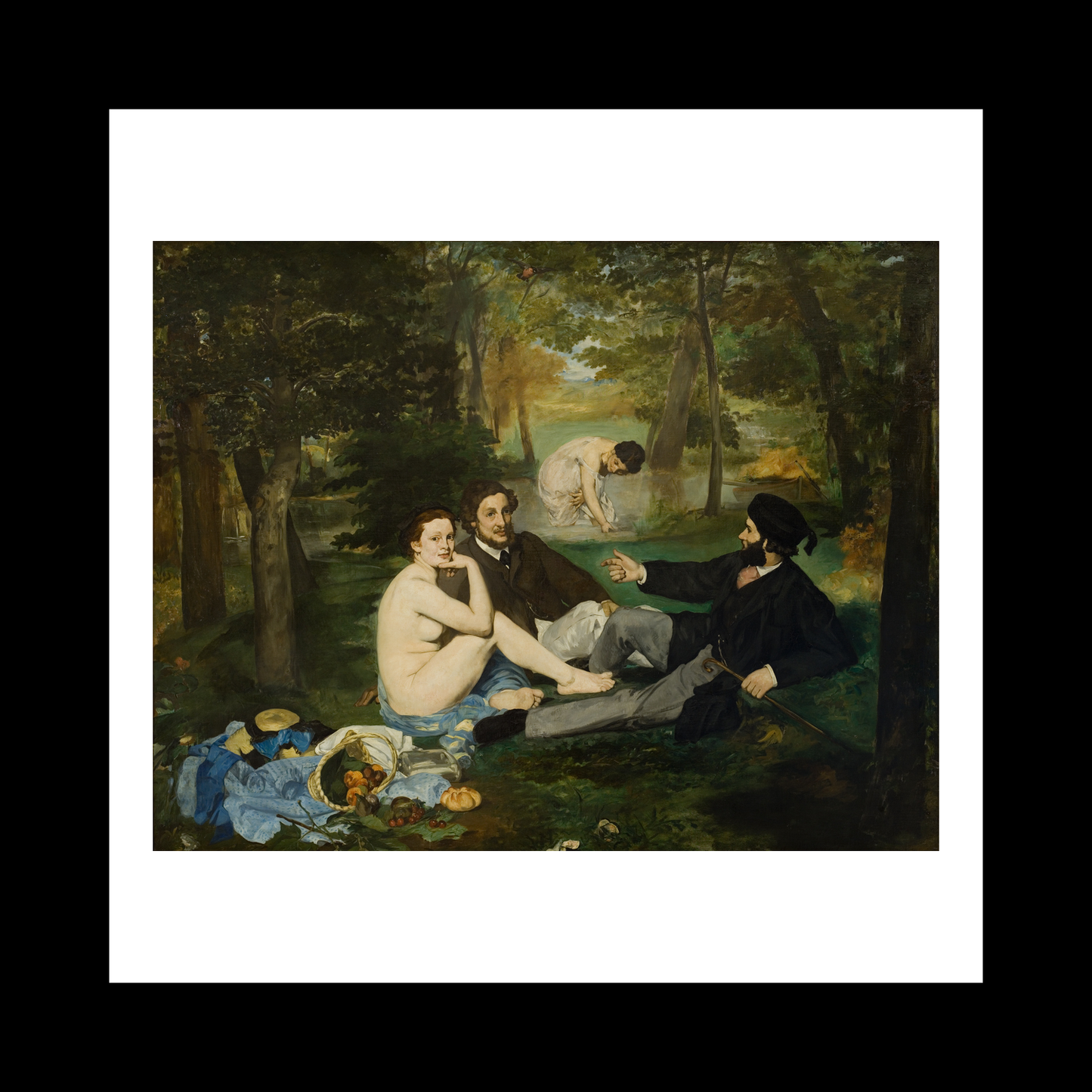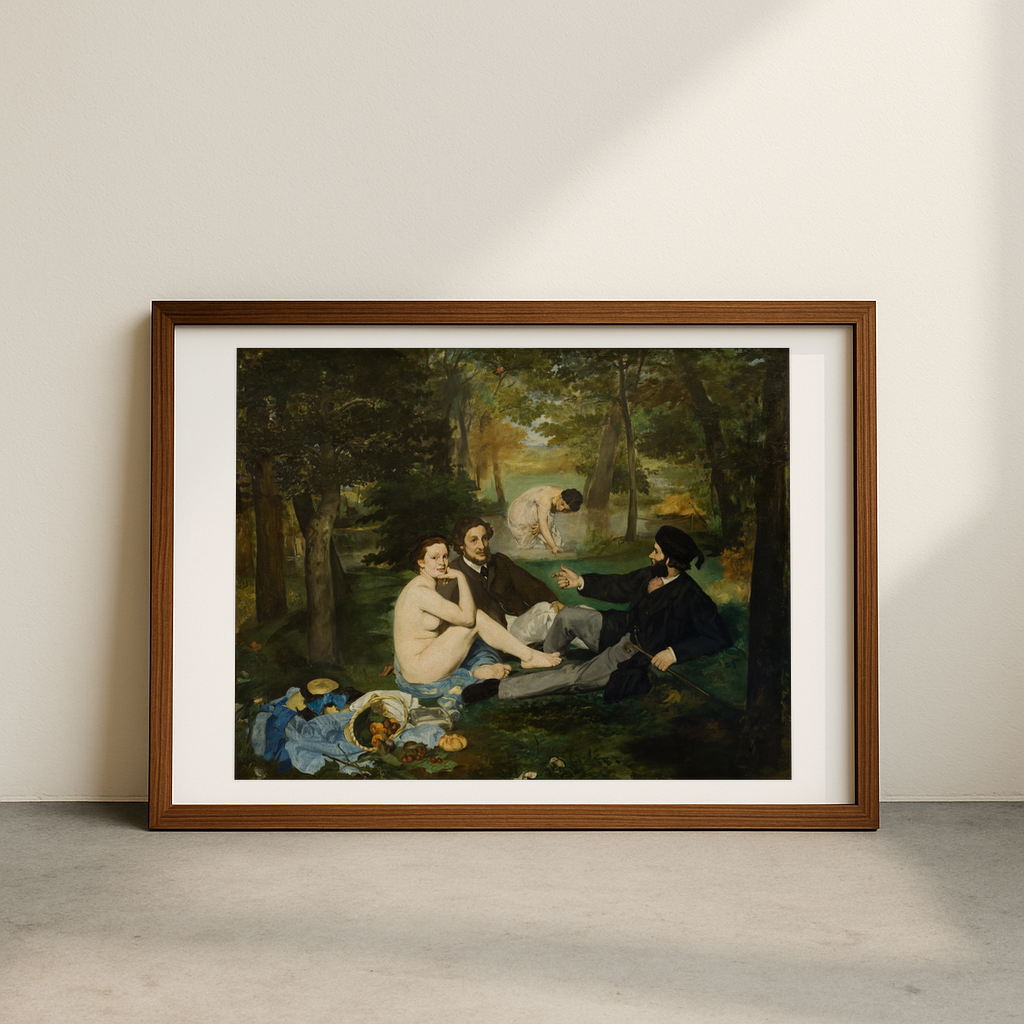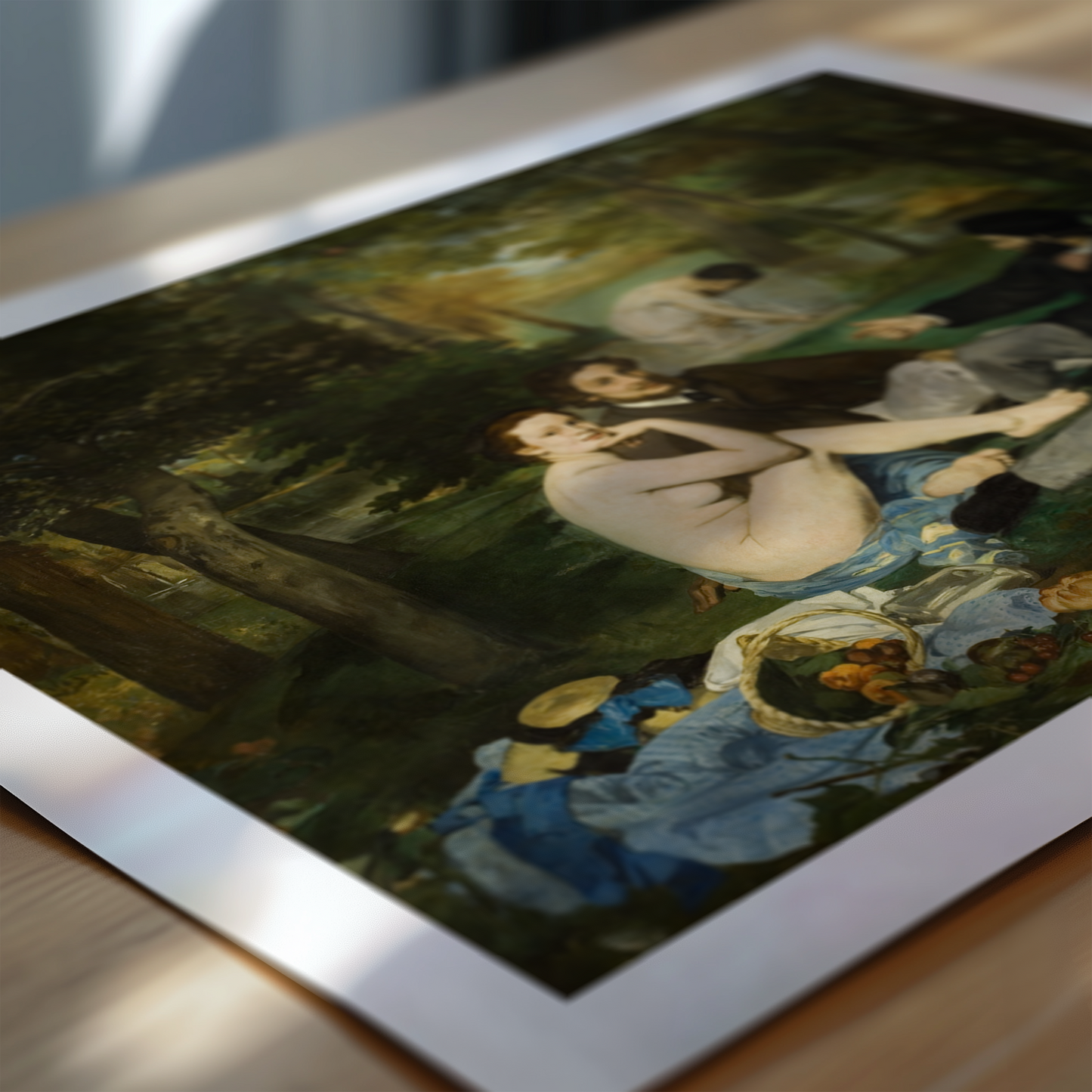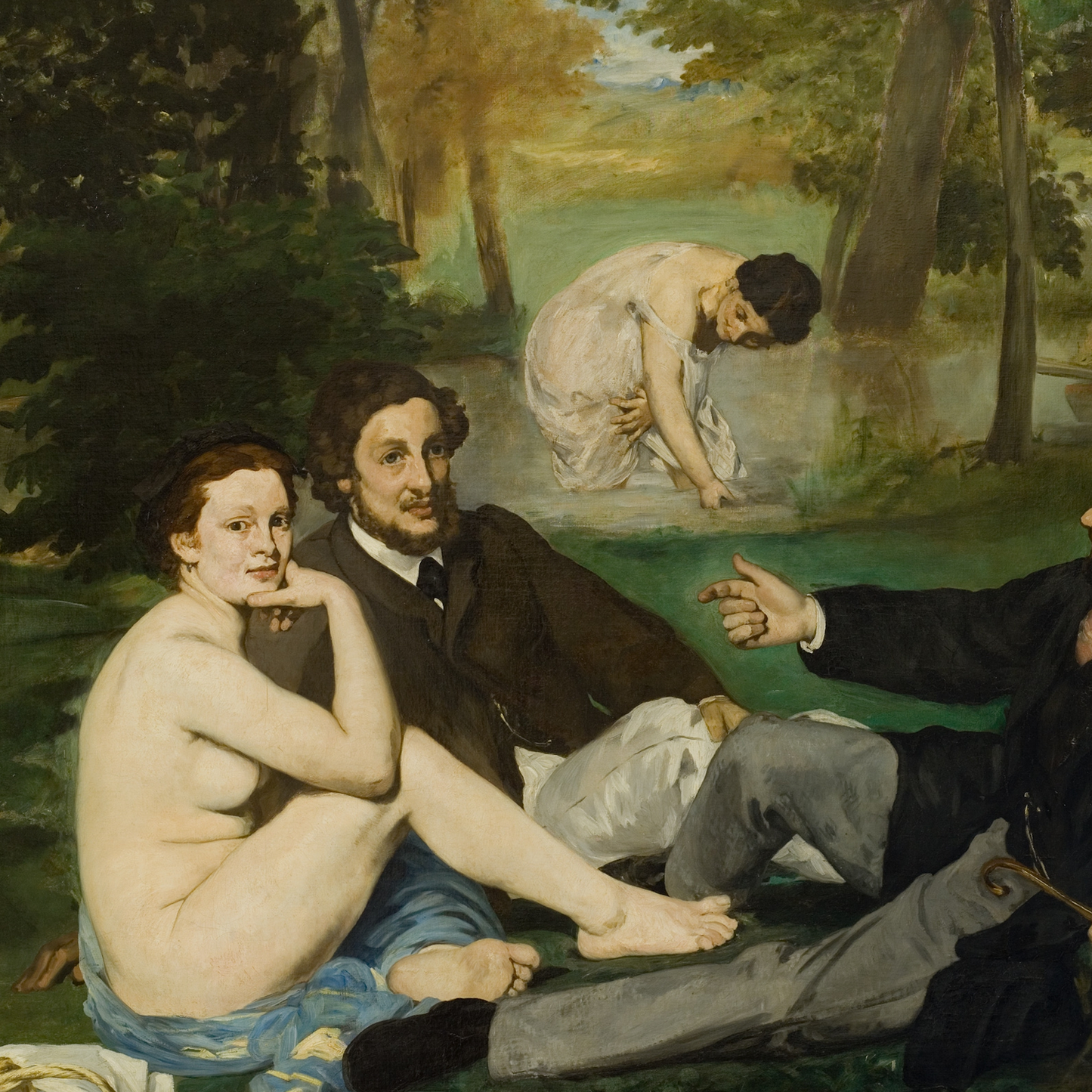1
/
of
6
Luncheon on the Grass
Luncheon on the Grass
Regular price
£12.45 GBP
Regular price
Sale price
£12.45 GBP
Taxes included.
Quantity
Couldn't load pickup availability
Édouard Manet's 'Le Déjeuner sur l'herbe' (Luncheon on the Grass) of 1863 stands as one of the most provocative paintings of the 19th century. The large-scale work depicts an unusual scene: two fully-dressed men in contemporary clothing sitting with a nude woman in a woodland setting, while another woman, partially dressed, bathes in a stream behind them. The stark contrast between the casual demeanour of the men and the direct, unabashed gaze of the nude figure created an immediate scandal in Parisian society.
Manet's technique was revolutionary for its time. He abandoned traditional gradual transitions between light and dark, instead employing bold contrasts and flattened forms. The painting's composition deliberately references Renaissance works, particularly Giorgione's 'Concert Champêtre', while simultaneously subverting classical conventions. The artist's use of broad, visible brushstrokes and unconventional perspective challenged academic painting standards, helping pave the way for Impressionism.
The painting's significance lies not just in its technical innovation but in its bold social commentary. By placing a modern nude woman in a contemporary setting, rather than disguising her as a mythological figure, Manet confronted bourgeois hypocrisy head-on. The work was rejected by the official Paris Salon but exhibited at the Salon des Refusés, where it sparked intense debate about artistic freedom and social morality. This controversy helped establish Manet as a leading figure in the modernist movement, influencing generations of artists who would follow his lead in challenging artistic conventions.
The painting's enigmatic quality continues to intrigue viewers today. The casual interaction between the figures, the mysterious relationship between the clothed men and nude woman, and the peculiar spatial relationships within the composition create an atmosphere of unresolved tension that draws viewers into active interpretation of the scene.
View full details
Manet's technique was revolutionary for its time. He abandoned traditional gradual transitions between light and dark, instead employing bold contrasts and flattened forms. The painting's composition deliberately references Renaissance works, particularly Giorgione's 'Concert Champêtre', while simultaneously subverting classical conventions. The artist's use of broad, visible brushstrokes and unconventional perspective challenged academic painting standards, helping pave the way for Impressionism.
The painting's significance lies not just in its technical innovation but in its bold social commentary. By placing a modern nude woman in a contemporary setting, rather than disguising her as a mythological figure, Manet confronted bourgeois hypocrisy head-on. The work was rejected by the official Paris Salon but exhibited at the Salon des Refusés, where it sparked intense debate about artistic freedom and social morality. This controversy helped establish Manet as a leading figure in the modernist movement, influencing generations of artists who would follow his lead in challenging artistic conventions.
The painting's enigmatic quality continues to intrigue viewers today. The casual interaction between the figures, the mysterious relationship between the clothed men and nude woman, and the peculiar spatial relationships within the composition create an atmosphere of unresolved tension that draws viewers into active interpretation of the scene.
